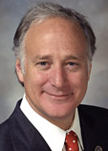Environment
Environmentalists assail plan for lakeside high rises
Districts 6 & 10 Clean Energy Forum
Districts 6 & 10 Clean Energy Forum
First of a half-dozen opportunities for
candidates to outline energy strategies
by Joseph Caterine
© The Austin Bulldog 2014
Posted Tuesday September 18, 2014 2:41pm
A few dozen people braved the rainy weather last Friday night to attend the first in a series of City Council candidate forums about one of the City's most valuable assets: Austin Energy. The low turnout and rainfall did not dampen the lively discussion of the issues.
District 6 and 10 candidates mingled with district residents on the second floor of the Rissman Fellowship Hall at First Presbyterian Church, surrounded by darkened stain-glass windows and vacant chairs.
 Phillip Martin, deputy director at Progress Texas, an organization that promotes progressive ideals, welcomed attendees as the moderator of the event and emphasized that this was a forum, not a debate. Candidates would have a chance to make one-minute opening and closing speeches, and they would have to answer a series of questions relating to Austin Energy with varying time limits.
Phillip Martin, deputy director at Progress Texas, an organization that promotes progressive ideals, welcomed attendees as the moderator of the event and emphasized that this was a forum, not a debate. Candidates would have a chance to make one-minute opening and closing speeches, and they would have to answer a series of questions relating to Austin Energy with varying time limits.
District 6 candidates
 The District 6 candidates started the opening remarks. Matt Stillwell, whose campaign website states that he founded a marketing firm and an insurance company,talked about living in all the different parts of Austin over the course of his life, and his service in various community groups, including the Oversight Committee of the Round Rock Independent School District, and his neighborhood's Architectural Control Committee.
The District 6 candidates started the opening remarks. Matt Stillwell, whose campaign website states that he founded a marketing firm and an insurance company,talked about living in all the different parts of Austin over the course of his life, and his service in various community groups, including the Oversight Committee of the Round Rock Independent School District, and his neighborhood's Architectural Control Committee.
 Jimmy Flannigan said the relationships he has built through working with the Austin Gay and Lesbian Chamber of Commerce made him stand out among the other candidates.
Jimmy Flannigan said the relationships he has built through working with the Austin Gay and Lesbian Chamber of Commerce made him stand out among the other candidates.
District 10 candidates
Steve Adler Land Developer
Steve Adler Land Developer
The mayoral candidate profited from not
having to comply with the SOS Ordinance
Investigative Report by Ken Martin
© The Austin Bulldog 2014
Part 6 in a series
Posted Tuesday August 5, 2014 10:25am
 Environmentalists sharply criticized mayoral candidate Stephen Ira “Steve” Adler for representing land owners who avoided compliance with current environmental ordinances, as The Austin Bulldog reported in Part 4 and Part 5 of this series.
Environmentalists sharply criticized mayoral candidate Stephen Ira “Steve” Adler for representing land owners who avoided compliance with current environmental ordinances, as The Austin Bulldog reported in Part 4 and Part 5 of this series.
A review of several hundred pages of public records obtained through research and public information requests indicate that Adler himself personally profited from not having to comply with the Save Our Springs Ordinance for development of a tract in Oak Hill.
The steeply sloped 16-acre tract that Adler and law partner Michael Barron bought in January 1995 carried with it a Restrictive Covenant executed in December 1987—more than 10 years before any development plans were filed. The Restrictive Covenant granted rights to 65 percent impervious cover on the tract. If subject to the Save Our Springs Ordinance, enacted more than two years before Barron and Adler purchased the tract, impervious cover would have been limited to 25 percent.
The site plan for development of the property was filed by Barron and Adler in May 1998, more than three years after they bought the land.
A post-bust bargain?
Steve Adler’s Baggage: Environmental Lawsuits
Steve Adler’s Baggage: Environmental Lawsuits
Mayoral candidate a lawyer whose work puts
him at odds with environmental organizations
by Ken Martin
© The Austin Bulldog
Part 4 in a series
Posted Wednesday May 21, 2014 2:13pm
 The last lawyer elected mayor of Austin was Kirk Watson, now a state senator. Watson was elected in 1997 with strong endorsements of local environmental organizations. And why not, for he had served as the appointed chairman of the Texas Air Control Board, one of the predecessor agencies to what is now the Texas Commission on Environmental Quality. The Watson-led City Council was the first in which every member was endorsed by environmentalists—an important milestone in the mainstreaming of environmental values.
The last lawyer elected mayor of Austin was Kirk Watson, now a state senator. Watson was elected in 1997 with strong endorsements of local environmental organizations. And why not, for he had served as the appointed chairman of the Texas Air Control Board, one of the predecessor agencies to what is now the Texas Commission on Environmental Quality. The Watson-led City Council was the first in which every member was endorsed by environmentalists—an important milestone in the mainstreaming of environmental values.
The 2014 mayoral election will be like none that preceded it. The strength of environmental group endorsements, as well as the endorsements of other groups, will be diluted now that elections are moving from May to November. Voter turnout will be much larger, about 300,000 as opposed to some 50,000 that usually vote in May elections. If no candidate wins an outright majority on November 4—and has to face a December 16 runoff while competing for voters’ attention during holiday shopping and vacations—the importance of the environmental vote may be a larger factor in who gets elected.
Still, no one aspiring to be mayor wants to be seen as anti-environmental.
Which may be a challenge for mayoral candidate Stephen Ira “Steve” Adler.

As reported in Part 2 of this series, Adler earned respect for his work in the state legislative sessions 1997-2005 as chief of staff and general counsel for State Senator Eliot Shapleigh (D-El Paso), and for his leadership in, and financial support of, numerous important nonprofit organizations.
Environmentalists are wary of Adler because as an attorney he represented developers who gained rights to construct projects over the Barton Springs portion of the Edwards Aquifer without having to comply with the Save Our Springs Ordinance, in one instance, or with predecessor ordinances in two others.
 “It is important to remember that when Steve Adler helps clients evade City of Austin environmental regulations, Adler is representing polluters,” said attorney Brad Rockwell, who was deputy director of the Save Our Springs Alliance and represented it in a 2004 lawsuit that tried to stop the construction of a Lowe’s Home Center in Sunset Valley.
“It is important to remember that when Steve Adler helps clients evade City of Austin environmental regulations, Adler is representing polluters,” said attorney Brad Rockwell, who was deputy director of the Save Our Springs Alliance and represented it in a 2004 lawsuit that tried to stop the construction of a Lowe’s Home Center in Sunset Valley.
BCCP Celebration
Looks Back On 15 Years of Accomplishments
Preserve Still Short of Acreage But Provides
a Lasting Legacy for Future Generations
by Ken Martin
© The Austin Bulldog 2011
 Spirits were high on May 2, 1996, when Nancy Kaufman, regional director of the U.S. Fish and Wildlife Service, signed the permit at 10:24am, the stamp of approval obtained through the Balcones Canyonlands Conservation Plan (BCCP). The plan called for the creation of a preserve system (the Balcones Canyonlands Preserve or BCP) to protect endangered and at-risk species. The overcast morning cooled temperatures and saved a lot of sweat for those who attended the invitation-only celebration, including Interior Secretary Bruce Babbitt, former U.S. Representative J.J. “Jake” Pickle, and other dignitaries.
Spirits were high on May 2, 1996, when Nancy Kaufman, regional director of the U.S. Fish and Wildlife Service, signed the permit at 10:24am, the stamp of approval obtained through the Balcones Canyonlands Conservation Plan (BCCP). The plan called for the creation of a preserve system (the Balcones Canyonlands Preserve or BCP) to protect endangered and at-risk species. The overcast morning cooled temperatures and saved a lot of sweat for those who attended the invitation-only celebration, including Interior Secretary Bruce Babbitt, former U.S. Representative J.J. “Jake” Pickle, and other dignitaries.
Holding the permit aloft after signing it, Kaufman said, “It looks like it’s made out of paper but it’s really made out of blood, sweat and tears.”
That was not an exaggeration, considering the plan was eight years in the making. From 1988 through 1996, concerned citizens, business leaders, landowners, developers, environmental groups, scientists and the Fish and Wildlife Service collaborated to create a Habitat Conservation Plan that allowed the permit to be issued under the Endangered Species Act.
We were bussed in that morning amid tight security that blocked access by the protesters, who had massed outside the gate to Reicher Ranch on Ranch Road 620. Inside, we stood amid the junipers and watched turkey vultures coasting lazily on the currents overhead. Remarks were purposely kept short so that all in attendance would have time to sign the registry that would stand as testimony to this unique achievement, which Babbitt called, “the very first place in the United States we have produced an urban conservation plan.”
Kerry Tate, chair of the Greater Austin Chamber of Commerce said, “In developer’s terms, we could shout, ‘Done deal.’”
But Babbitt issued a warning: “I recognize this as the end of the beginning, not the beginning of the end. We’ve got a long way to go.”
The irony of this project being ramrodded by Babbitt, who said he was drawn to the challenge of working on the Endangered Species Act for President Bill Clinton, is that around here Babbitt wasn't exactly thought of as a friend of the environment. As I later wrote in the July 2002 edition of The Good Life magazine, in a story titled “The Life and Death of Barton Springs,” it took two federal lawsuits filed by the Save Our Springs Alliance to force Babbitt to finally declare the Barton Springs Salamander an endangered species in 1997.
But then, theBalcones Canyonlands Conservation Plan was not simply about the environment. It gave landowners who wanted to develop or otherwise alter habitat for endangered species that’s outside the preserve boundaries an alternative to seeking an individual permit from the Fish and Wildlife Service (FWS). The FWS permitting process requires development of an individual habitat conservation plan tailored to the project and may require additional habitat to be set aside.
The Balcones Canyonlands Conservation Plan offered landowners a faster process administered by Travis County in which they could buy participation certificates to allow development in habitat located outside the preserve.
On May 13, 2011, fifteen years after the BCCP permit was signed, there were no protesters at the gate and precious little cloud cover to ward off the heat, but the spirit of the event was again one of celebration.
Bad press, mea culpas
Who Protects the Texas Environment?
Hint: It Isn’t the State Agency That’s Supposed To
The Texas Commission on Environmental Quality’s mission statement says the agency “strives to protect our state’s human and natural resources consistent with sustainable economic development. Our goal is clean air, clean water, and the safe management of waste.” But the agency’s numerous critics charge that the environmental protection of Texas is repeatedly trumped by politically motivated management decisions concerned only with the economic development part of the equation. “There is so much dirt on the agency and most of it has never been investigated,” says Neil Carman, clean air director for the Sierra Club’s Lone Star Chapter, based in Austin. From 1980 to 1992, Carman worked as an investigator and inspector for the Texas Air Control Board, a predecessor agency that was merged into what is now the TCEQ. Carman says he has a list of criminal cases against the TCEQ that have never been pursued, compiled from trading war stories with other investigators around the state. One of the primary areas of malfeasance Carman cites is the TCEQ’s air permitting system.
“There is so much dirt on the agency and most of it has never been investigated,” says Neil Carman, clean air director for the Sierra Club’s Lone Star Chapter, based in Austin. From 1980 to 1992, Carman worked as an investigator and inspector for the Texas Air Control Board, a predecessor agency that was merged into what is now the TCEQ. Carman says he has a list of criminal cases against the TCEQ that have never been pursued, compiled from trading war stories with other investigators around the state. One of the primary areas of malfeasance Carman cites is the TCEQ’s air permitting system.
“TCEQ issued more than 150 state flexible air permits from 1995-2009 to major industrial plants by using an illegal permitting program that circumvented the Clean Air Act,” Carman says. These plants include many large industrial sources of toxic air pollutants, particulate matter, ozone-forming compounds, acid rain-producing gases, and haze-forming chemicals. The U.S. EPA Region 6 headquarters listed 142 plants in Texas in a September 25, 2007, letter that was sent to companies. The letter indicated the need for grandfathered, industrial plants that hold so-called “Flexible Permits” to reduce pollution and comply with the Clean Air Act.
Carman authored a 1999 report on behalf of the Sierra Club and the Galveston-Houston Association for Smog Prevention. The report identified about 1,070 Texas plants partly or totally grandfathered under the state law known as the Texas Clean Air Act.
“We have a permitting system that creates enforcement nightmares,” Carman says. He said the TCEQ has issued somewhere around 86,000 permits for industrial plants and facilities since 1971, and only denied about 15. Eighty-six thousand permits over 40 years averages out to 2,150 a year—more than eight every single day. Carman says the incredulous number comes directly from the permit numbers assigned by the TCEQ.
“People are shocked when they hear about all the air permits being more than 86,000—and that is a dated total. But that is good for ‘bidness’ in Texas. They issue this stuff like candy, every day, state







